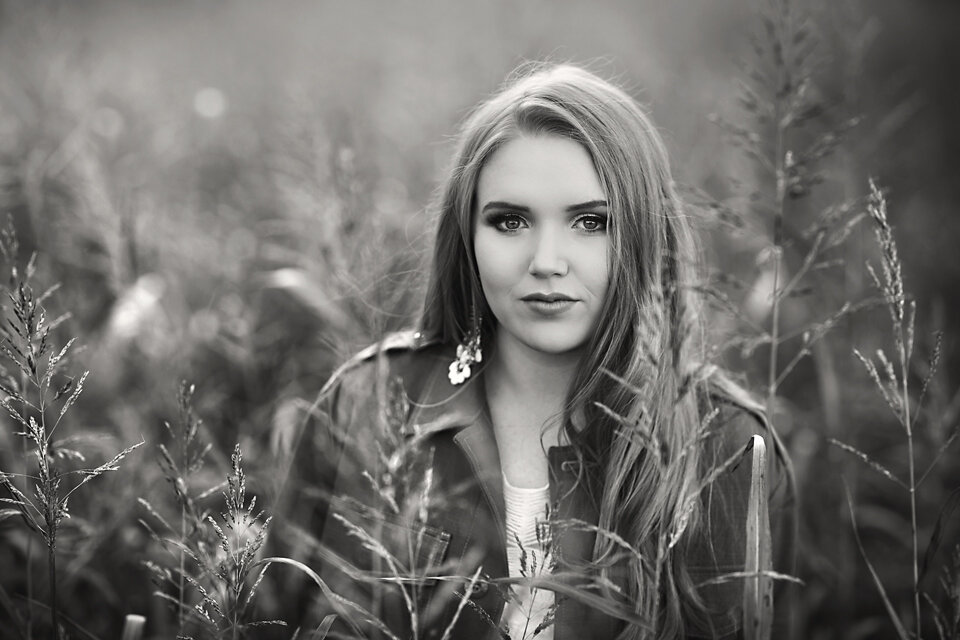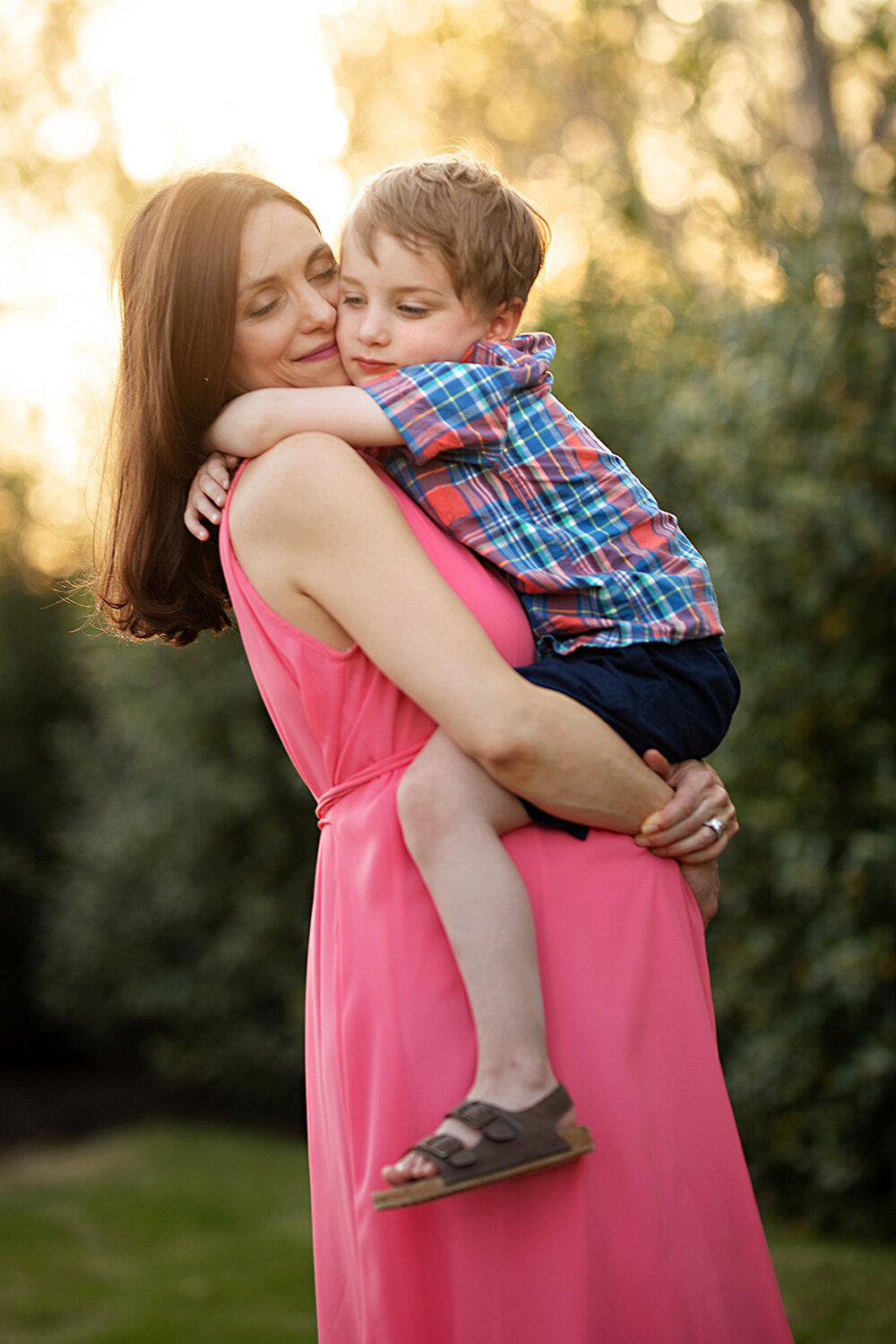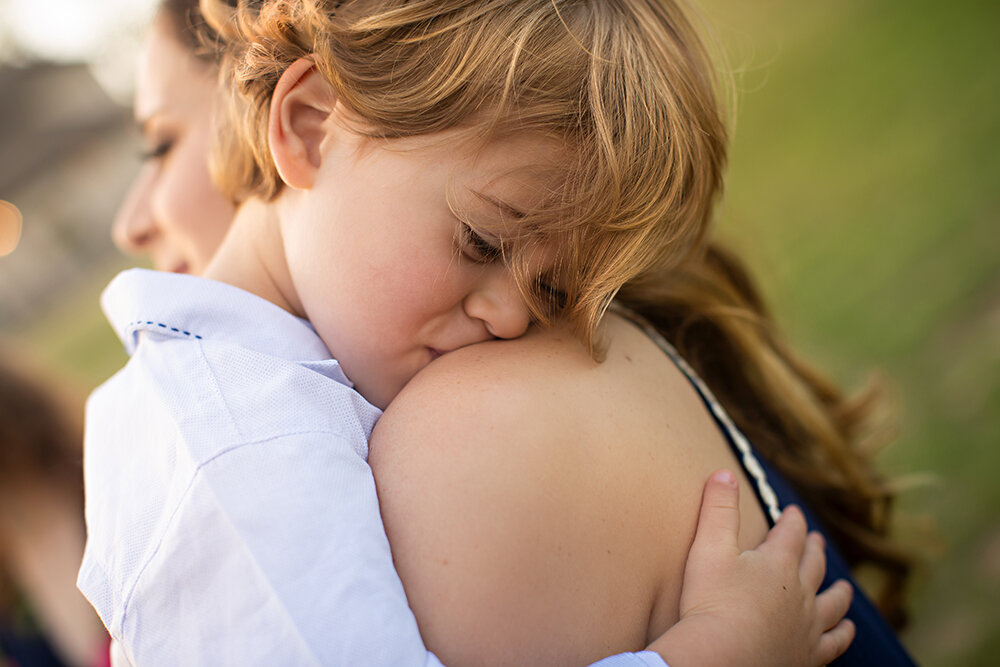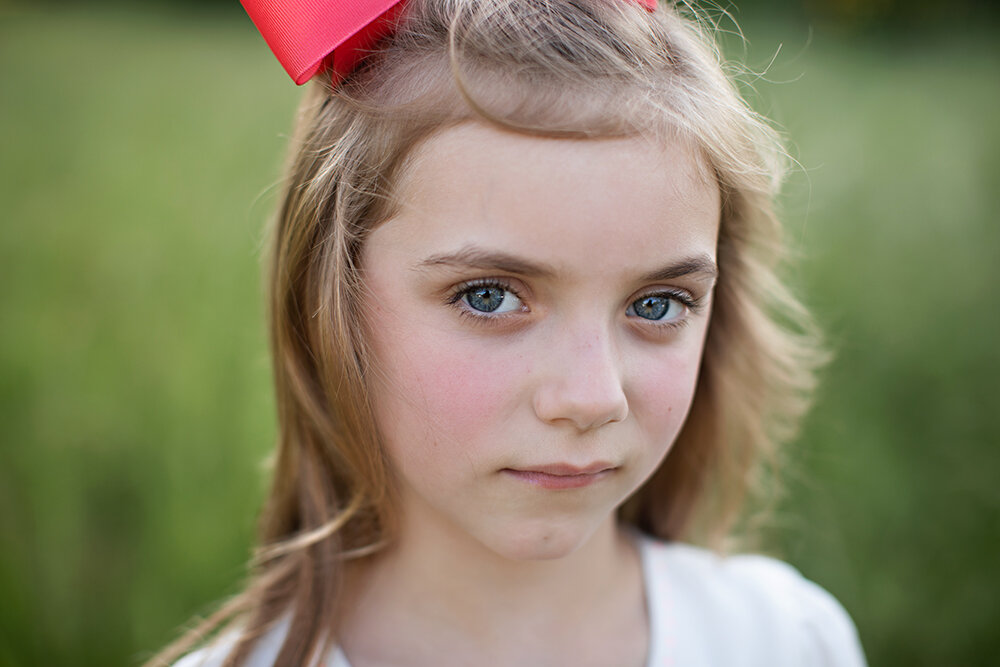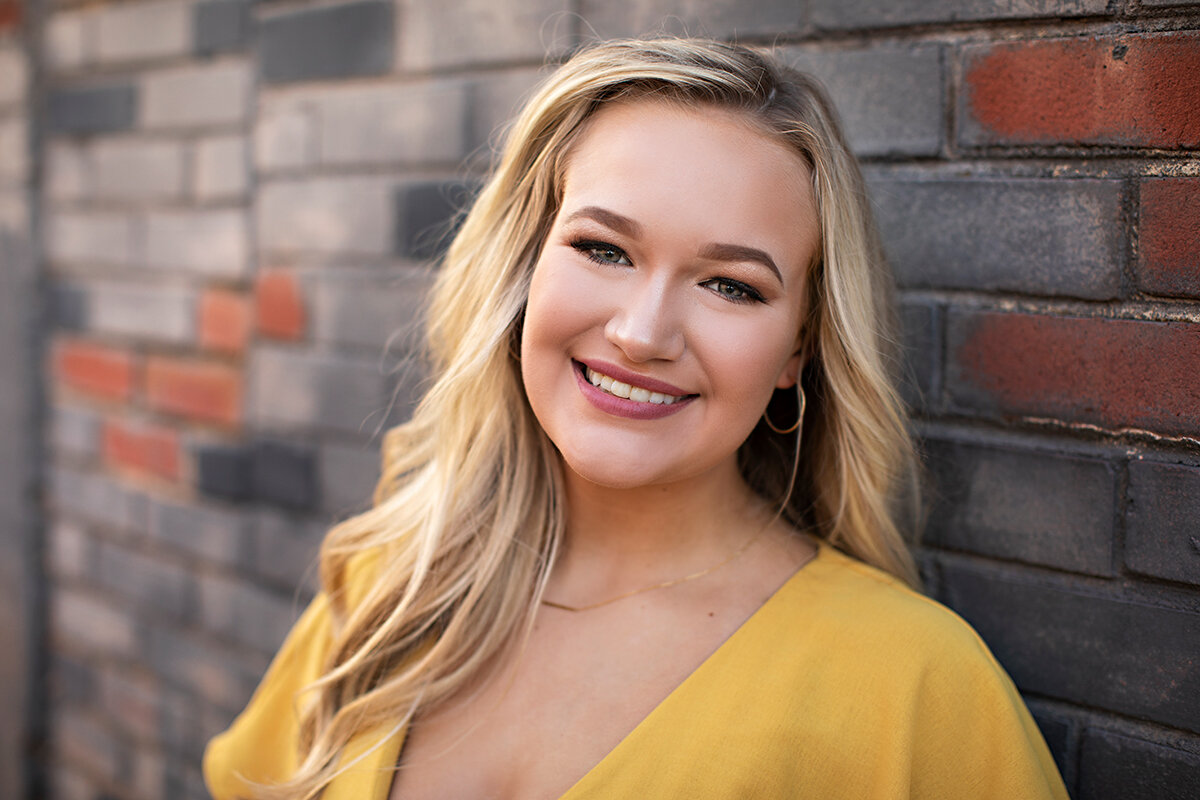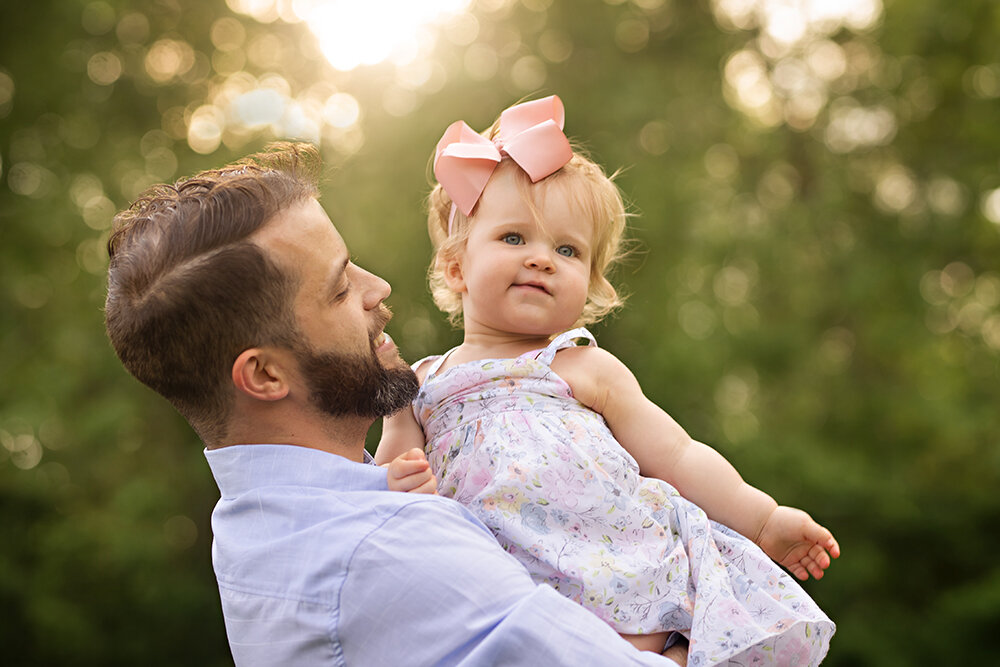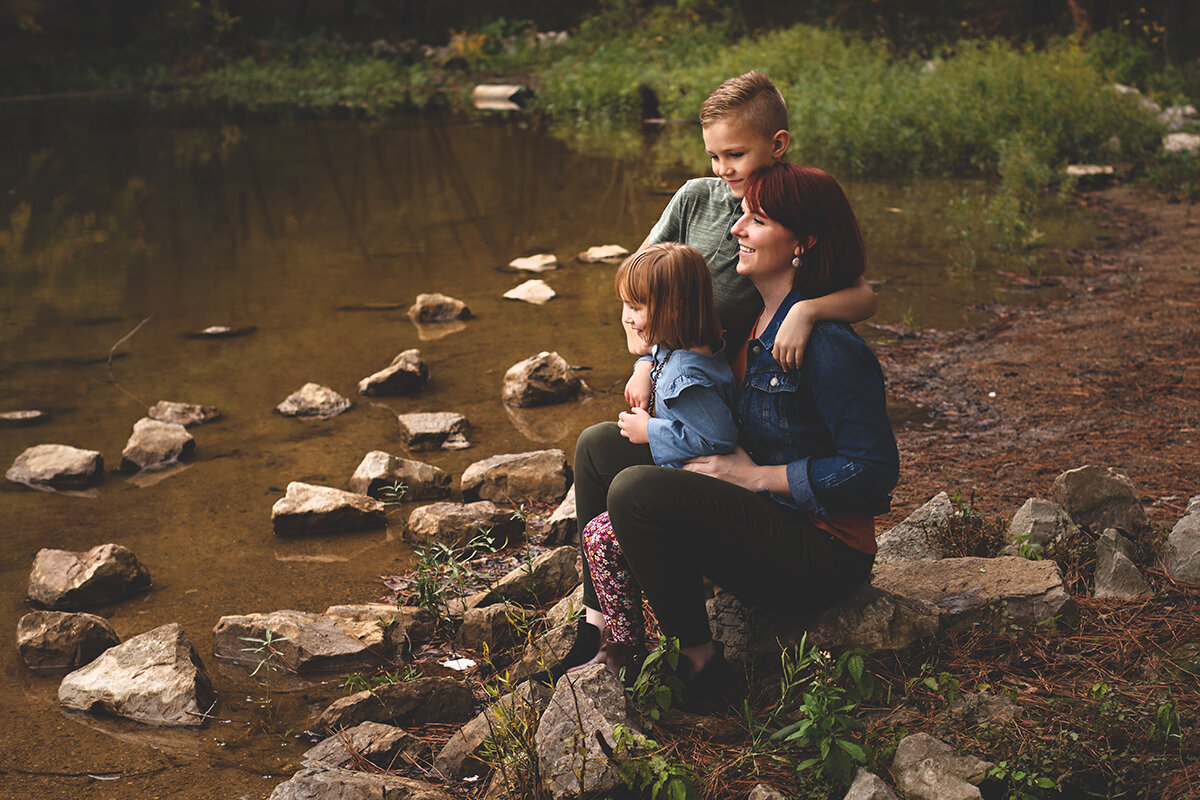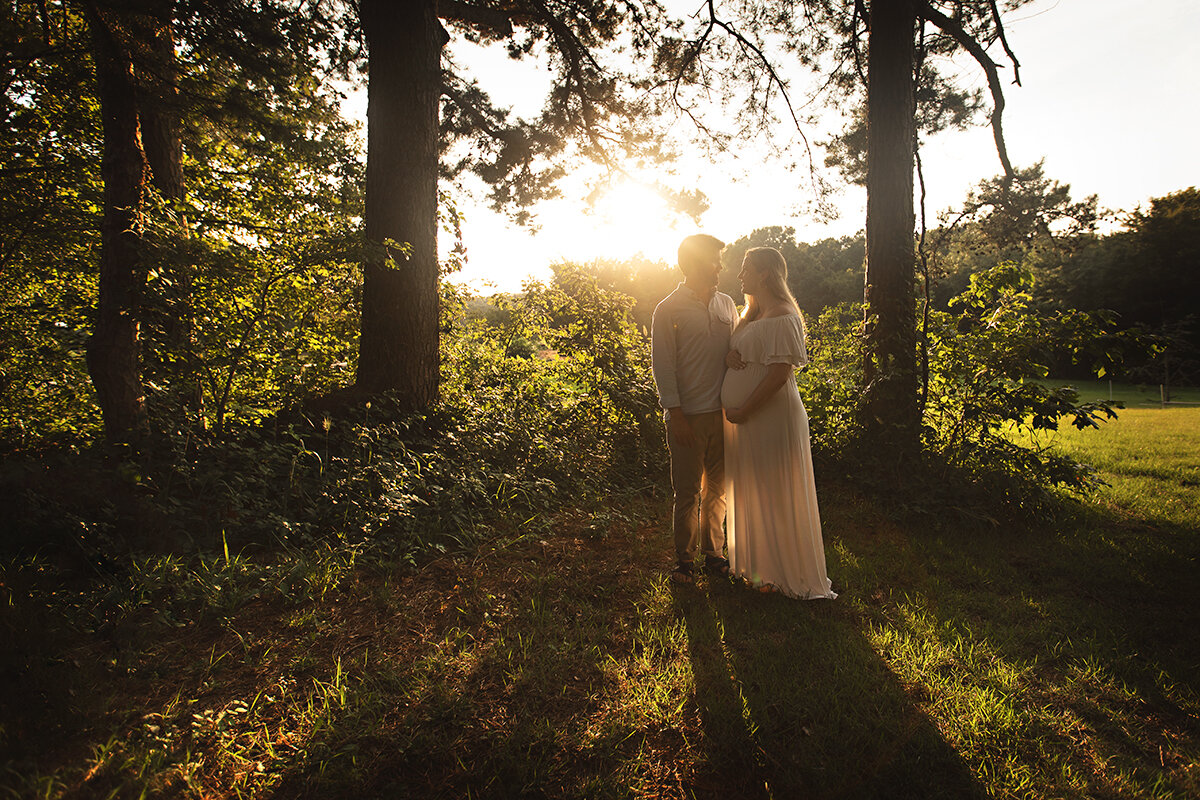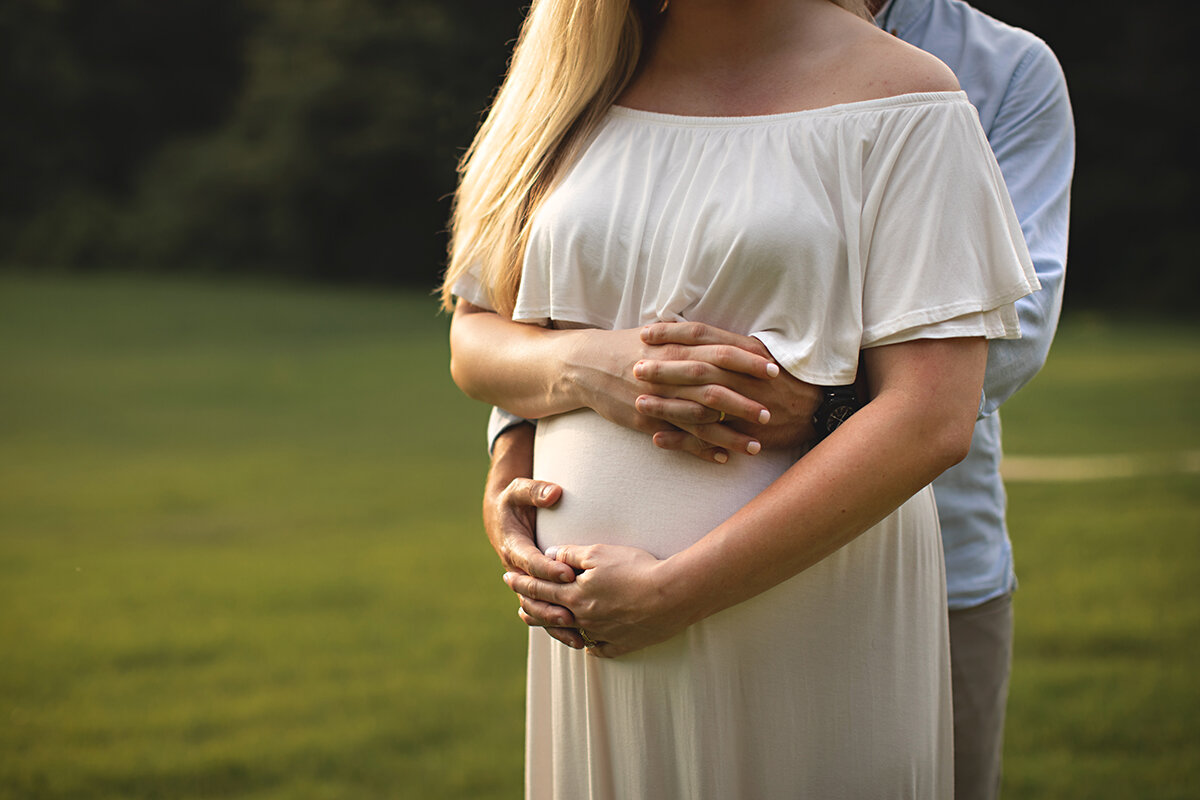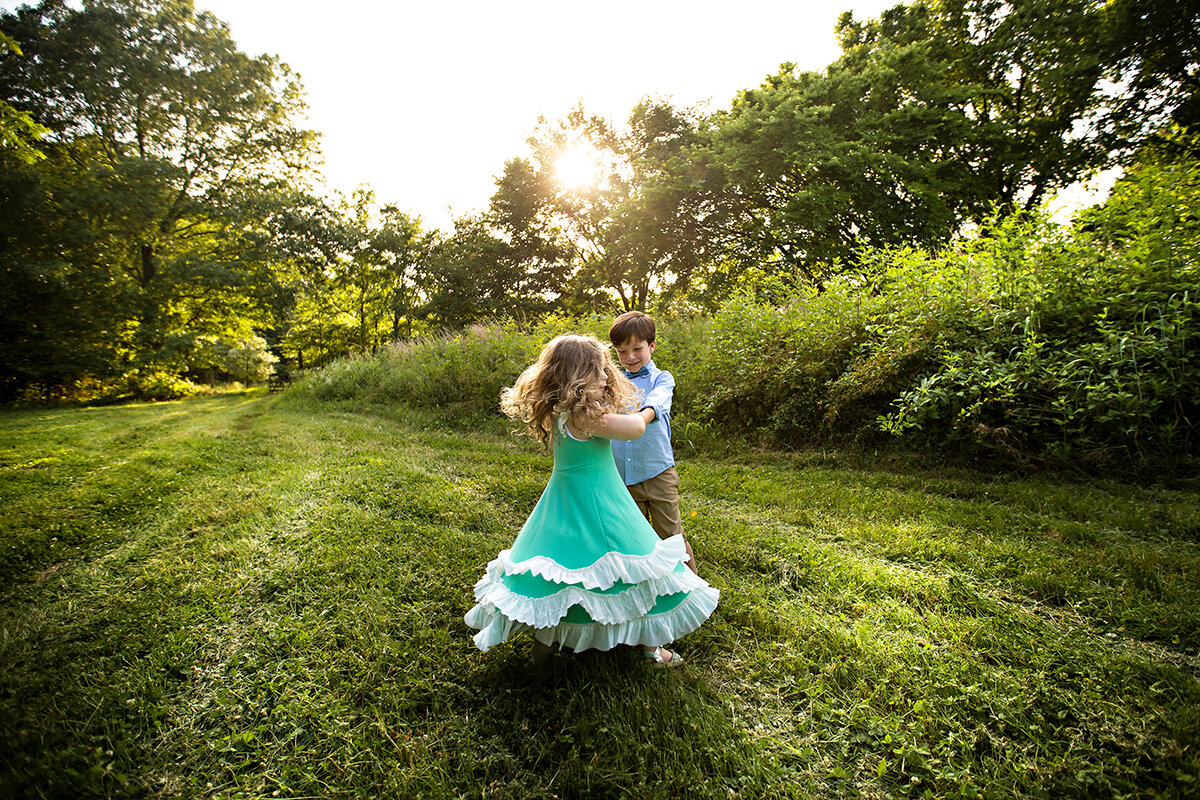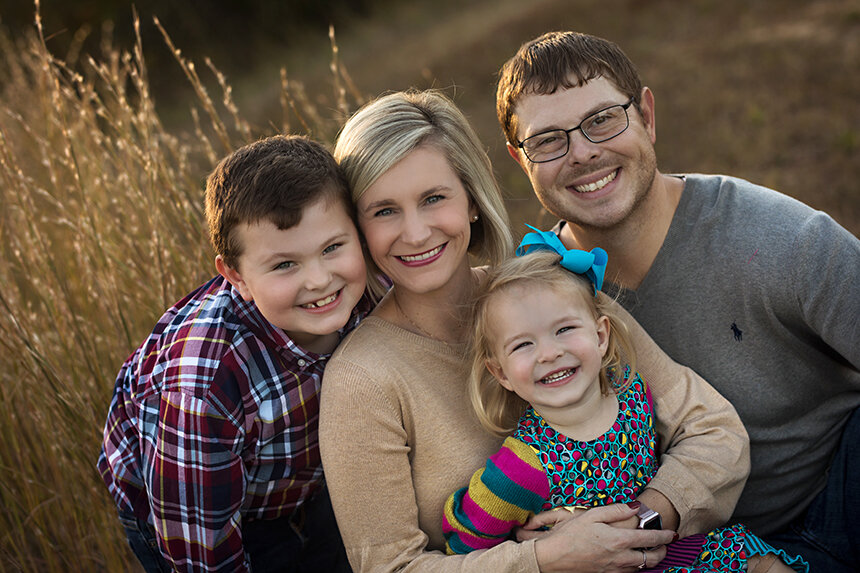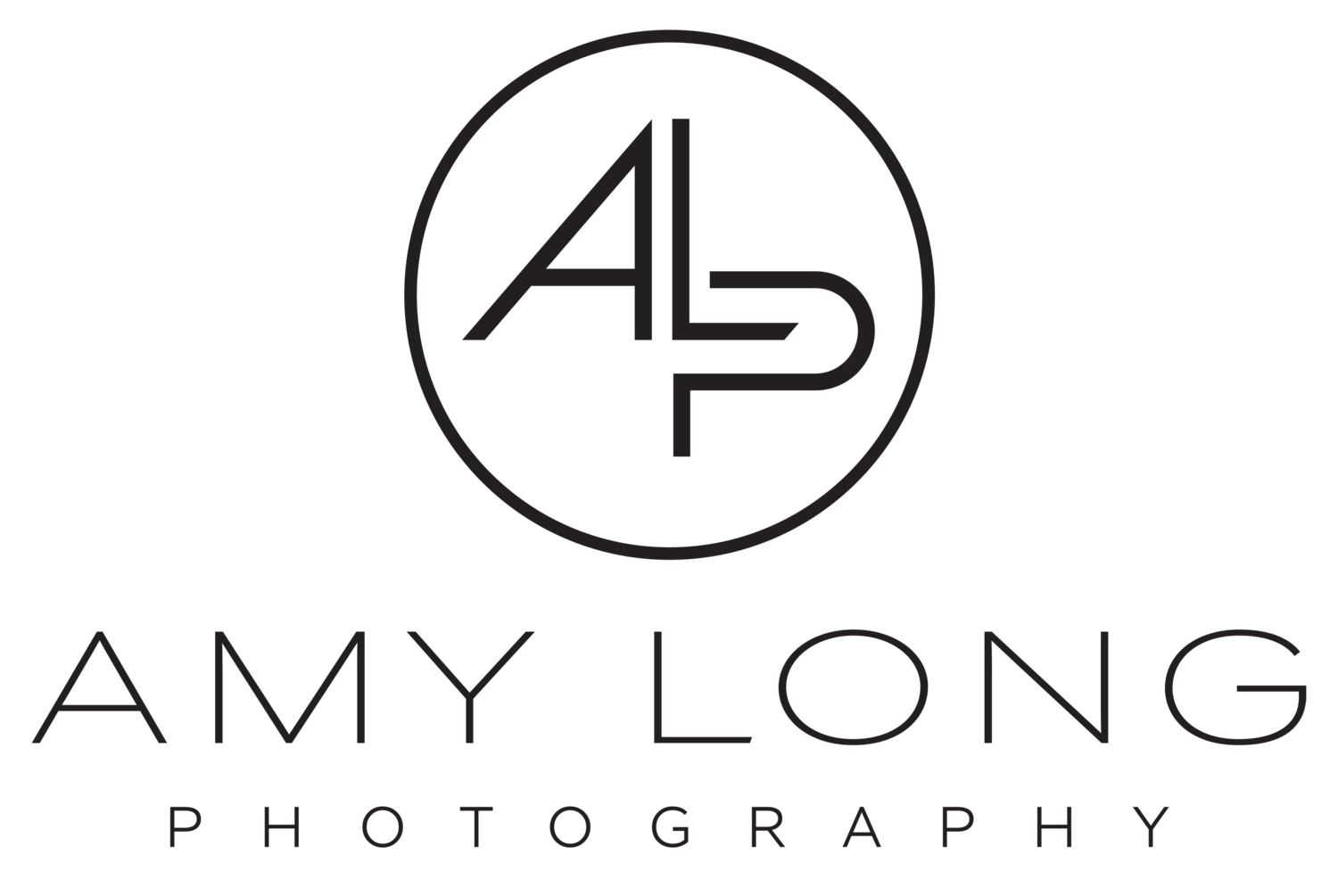One of the most frequent questions when booking a session is - when is the best time to book a natural light session? Well, it’s all about the light. I often tell my clients, the further away from noon we can be, the better, but it also depends on the time of year and length of the day. I keep track of sunset times through an app on my phone and sometimes a sunset session can be as late as 8pm or as early as 4 pm, depending on the time of year.
As the sun moves throughout the day, and the angles change, you get different effects. It can be hard to balance the harsher light during midday. Looking for some shade is an option, however even then you tend to get “hotspots” on your clients or a strong color cast from the trees or buildings surrounding them because even the shaded light is bouncing back on them from the harsh sun.
If your session is all adults or a senior, it is easier to pull off. If you have kids, and they like to be active, keeping them in the safe zone is difficult. Booking a session later in the day or very early, allows more even, soft light and the ability to shoot freely in a larger area.
I typically shoot outdoor sessions with the sun slightly behind my subjects, giving them a rim light around their face and body to separate them from the background. Finding early or late light, when the sun is at a very low angle in the sky, gives the subject a soft warm glow rather than harsh highlights. It also makes the rest of the light, on the subjects face, etc., far more even.
When thinking about morning sessions, many people request 10 am, which is doable, but remember that is only 2 hours from noon and by the time you finish the sun will be almost overhead. It is difficult to get up and get going really early, but the beauty of it is that your done with your day so early. I also find that many little ones are morning people, so that’s a bonus!
One great way to illustrate what light does at different angles is to use a flashlight and shine it in different directions to imitate the sun. If you hold it directly over your head and shine down, you get big black hollows where your eyes should be. That is what the sun does at noon when it is directly overhead!!
There is science behind all of this, of course. The short answer is - different colors travel faster, the sun is at a lower angle, thus further away at sunset leaving the longer yellow, orange and red rays more visible to the eye, plus dust particles and pollution come in to play and cause “scattering”. Anyway, you get the idea!
I hope this information helps you to schedule your next session!
